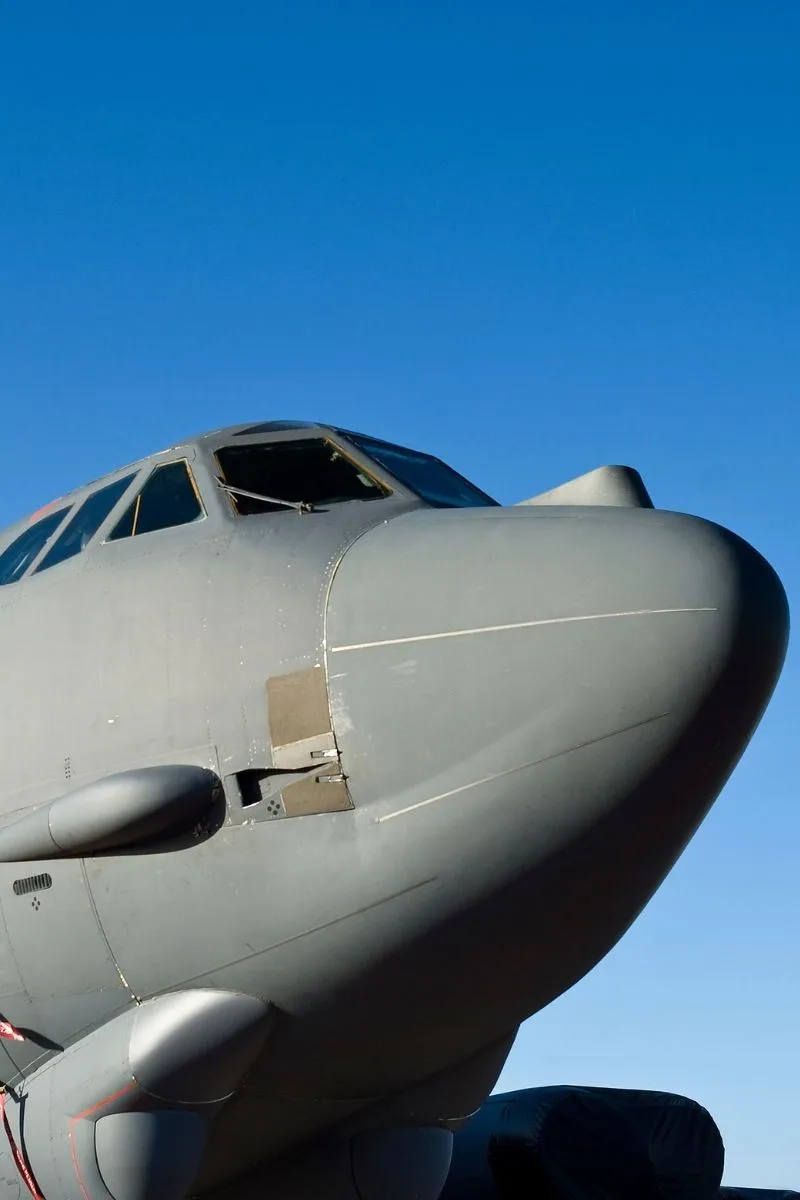The B-52 has been in service with the USAF since 1955.
In today’s world of rapid technology changes, it seems that as soon as you buy something, it’s obsolete. And, even though the changes have been faster in recent years, this has been going on for longer than you may think.
The same thing goes for military equipment.
The Wright Brothers
You know, the Wright brothers flew the first self-propelled, heavier-than-air craft in 1903. They measured its flying distance in feet and yards.
Eleven years later, in 1914, there were biplane, and even triplane, aircraft flying and fighting in World War I.
During the 1920s and 30s, there was an almost constant improvement in aircraft. Both speed and distance records were, over and over again, being broken. There were trans-Atlantic flights. An air-mail service began. Passenger service was becoming more common.
Twenty-five years after WW I, there were rather fast single-wing fighters and rather large multiple engine bombers flying in World War II.
The Jet Age
With the beginning of the jet-age, towards the end of WWII, the changes in aircraft have been even faster. These constant and rapid changes have continued into the 21st Century.
Well, there is an exception to this rapid replacement, it is an old workhorse called the Boeing B-52 Stratofortress, which replaced the B-36 Peacemaker in 1955. The B-52 took its maiden flight in April 1952. The B-52 has been in service with the USAF since 1955. That’s a long time for any piece of equipment; more than 65 years.
Now, Here’s the kicker. The B-52 is scheduled to be in use beyond the year 2050. That’s a hundred years.
Let’s compare that B-52 century of life with the two other current USAF bomber aircraft. The Rockwell B-1 Lancer became active in 1986 and the Northrop Grumman B-2 Spirit in 1997. Both are scheduled to be replaced in the coming decade, which gives both aircraft much less than half the expected service life of the B-52.
How can that be?
Basic Design of the B-52
The B-1 was designed to fly at high speeds and low altitudes below radar coverage.
The B-2 was designed to avoid detection with stealth technology.
On the other hand, the B-52 has a more generic design.
The B-52 was built to be a high-altitude bomber, but the overall design of the B-52 allows it to be re-configured without an overwhelming amount of effort.
Constant Improvement to the B-52
Given the basic design of the B-52, which in hindsight seems to have been brilliant, the aircraft has undergone many changes over the years.
Since its acceptance by the USAF in 1955, the B-52 has had many upgrades, including self-defense weapons, radar, communications, and other technology.
But, most importantly, the B-52 is capable of dropping or launching the widest array of weapons of any aircraft in the USA’s inventory. For example, the B-52 can carry and launch up to 20 cruise missiles.
The B-52 has also launched things other than weapons of destruction. The B-52 has been used to air-launch experimental aircraft. In 1959, the rocket-powered North American X-15 In 2010, the scramjet-powered Boeing X-51.
The latest and only B-52 now flying is the B-52H. The B-52H has a speed of 650 mph (Mach 0.86) and an 8,800 mile combat range.
B-52’s New Engine
The cost of maintenance for the B-52’s older engines added to the cost of fuel for those engines has made the USAF decide to install new engines.
Due to higher fuel efficiency and maintenance cost savings, the replacement engines will pay for themselves in just 10 years.
The new engines will also produce much less greenhouse gas.
The USAF is anticipating an increase in fuel efficiency in the range of 25 to 30 percent. This fuel efficiency translates to as much as a 40 percent improvement in combat range, which is currently 8,800 miles. This, of course, also means a greater time over target. For very long times in the air, this increased range also lowers the number of tankers required to keep the big aircraft flying.
The new engines may also provide the B-52 with additional improvements which the USAF would like but is not asking for. The new engines may give the B-52 a faster climb rate and an increase in speed over the current 650 mph.


